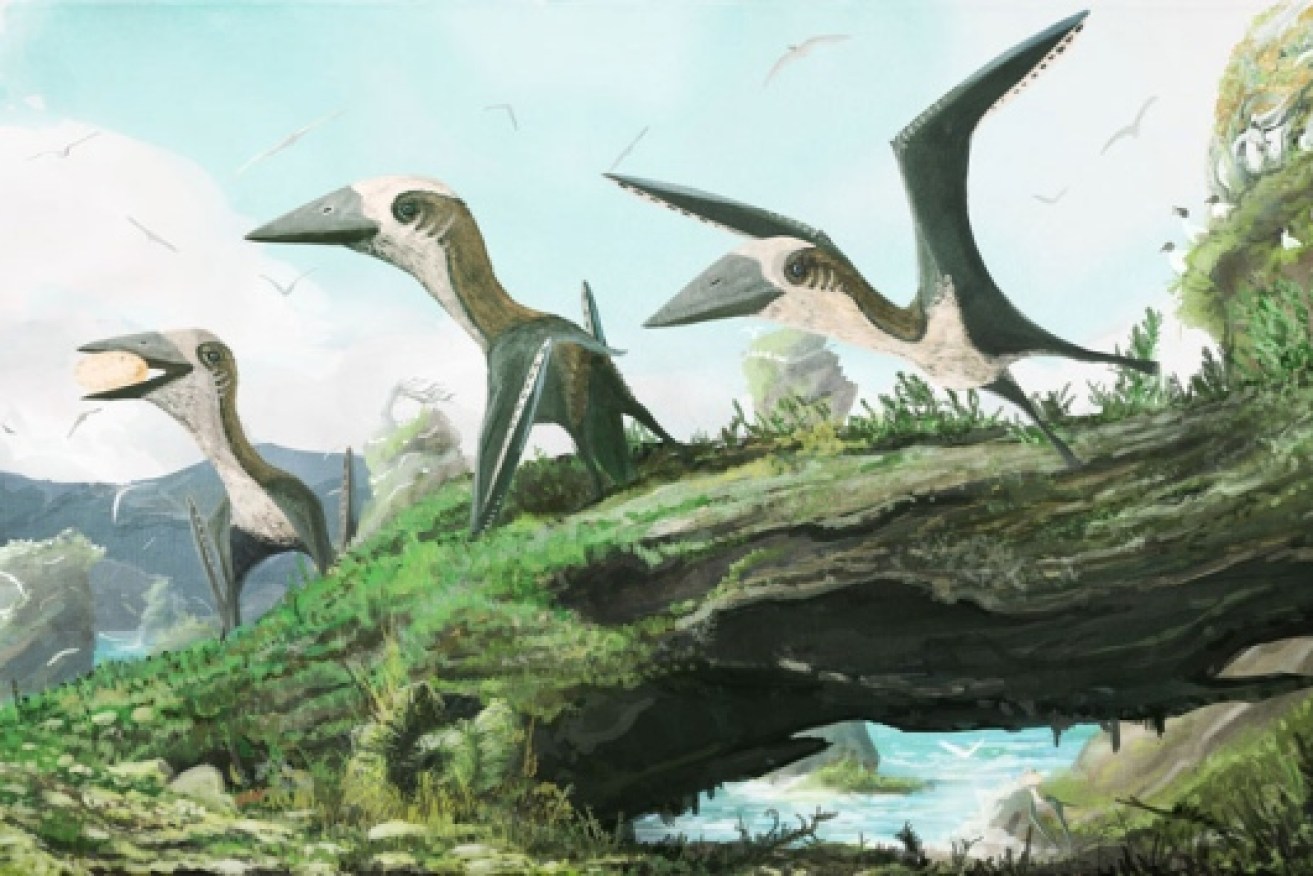Prehistoric flying reptile discovered on remote island


The fossil of a small pterosaur on Hornby Island in British Columbia has provided researchers with just enough information to conclude that it’s not simply a baby version of its giant cousin.
The pterosaur is about the size of a house cat, with a wingspan of about 1.5 metres.
It existed around 77 million years ago alongside the dinosaurs – which means it was fighting for perching space with early versions of bird species.
The creature’s bigger cousins were flying reptiles with wingspans of 11 metres, the same as small aeroplanes.
Known as azhdarchid pterosaurs, they were the largest flying creatures to populate our skies, casting their spooky shadows up until they were wiped out with the dinosaurs 66 million years ago.
Most pterosaurs had evolved into giants as a means of competing with birds that were more agile fliers and had done a better job at adapting to different habitats.
Birds – which are more directly related to dinosaurs than pterosaurs – were thought to have caused the extinction of smaller pterosaurs such as the one discovered in British Columbia, as far back as 100 million year ago.

Pterosaurs evolved into giants so they could take on their bird rivals. Photo: Getty
It was the absence of late-stage fossils of small pterosaurs that led scientists to believe they had become extinct earlier – but it seems that their bones were more easily broken up and lost because of their hollow structure – a flight adaptation they share with birds.
As described in a paper in the journal Royal Society Open Science by lead author Elizabeth Martin-Silverstone of Southampton University the fossil consists of a partial skeleton with a humerus (arm bone), some vertebrae and some possible limb fragments.
Martin-Silverstone and colleagues are careful not to call the little pterosaur a new species. They believe it’s most likely an azhdarchid pterosaur – belonging to the same family as the great giants.

The beautiful – and remote – Hornby Island in British Columbia. Photo: Herschel Supply
In an online discussion of the find, Martin-Silverstone wrote: “One question we had to answer was whether it was simply a baby. In order to determine the age of the animal … we took a very thin section of the bone and looked at it under polarised and non-polarised light.
Because they could tell the animal’s growing had started to slow, they determined it wasn’t a baby – perhaps a teenager or older.
Martin-Silverstone also noted that because the fossil has what’s known as a notarium – a section of fused vertebrae found in later pterosaurs to help support flight and wing musculature – they were able to conclude with confidence that it “is indeed a pterosaur and not a bird (bird fossils have also been recovered from Hornby Island)”.








